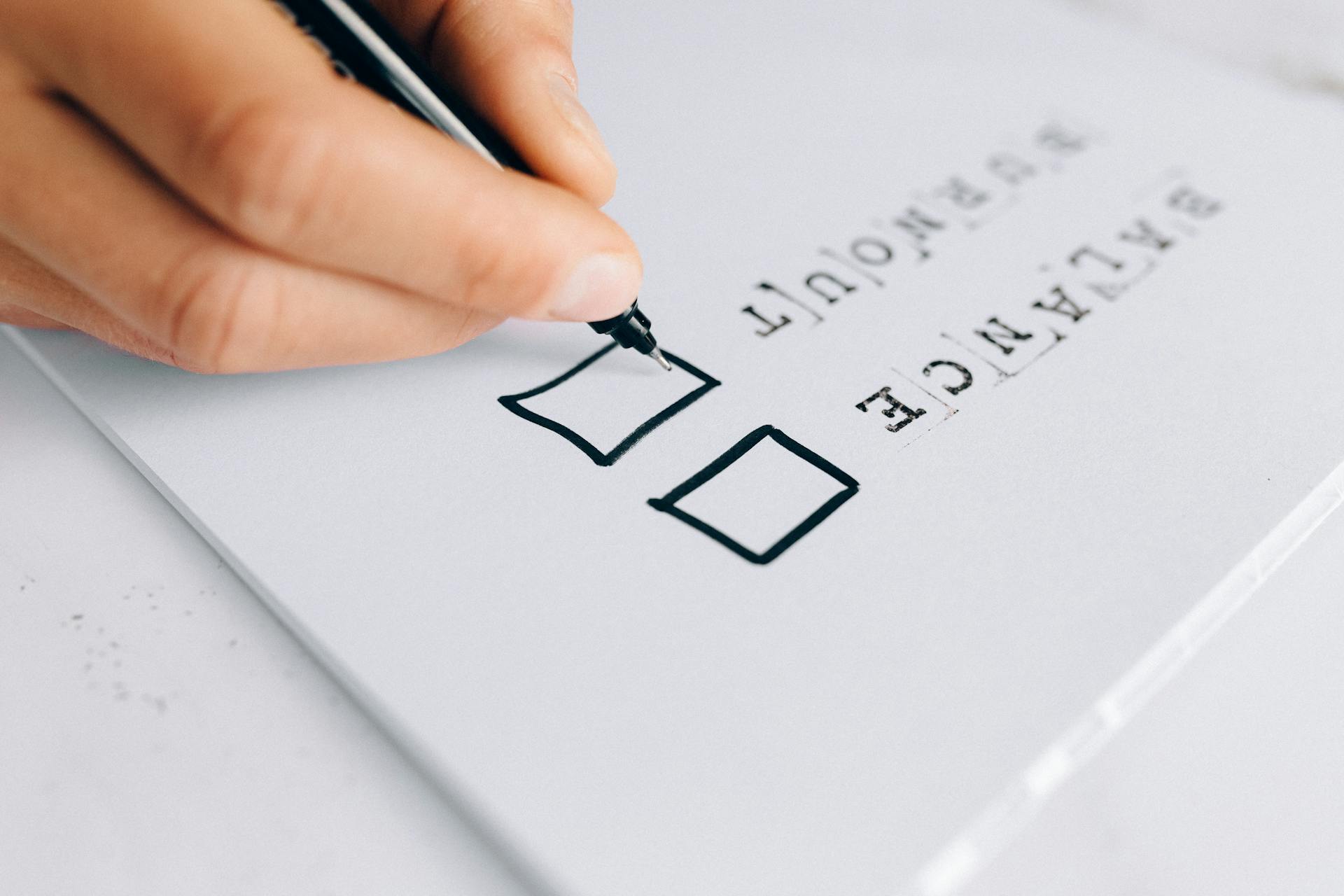
Compliance with HIPAA is a top priority for healthcare organizations, and it's essential to have a solid understanding of the regulations to avoid costly fines and penalties. HIPAA requires that all electronic protected health information (ePHI) be protected from unauthorized access, use, or disclosure.
Covered entities must implement policies and procedures to ensure the confidentiality, integrity, and availability of ePHI. This includes designating a HIPAA compliance officer, providing training to employees, and conducting regular risk assessments.
HIPAA compliance is not a one-time task, but an ongoing process that requires regular monitoring and maintenance. Regular audits and risk assessments can help identify vulnerabilities and prevent data breaches.
HIPAA requires that covered entities implement a breach notification policy, which includes notifying affected individuals, the Department of Health and Human Services (HHS), and the media in the event of a breach.
A different take: Health Insurance Exchange Notice
HIPAA Basics
HIPAA is a complex law, but understanding its basics is essential for compliance. The law has three main components: the Privacy Rule, Security Rule, and Breach Notification Rule.
Take a look at this: What Are Hipaa Laws
These rules address different aspects of protecting patient information, including individual rights, administrative safeguards, physical security measures, and breach reporting protocols.
The Privacy Rule lists 18 personal identifiers that must be removed from a designated record set before it can be considered de-identified and no longer subject to HIPAA standards.
Here are the 18 personal identifiers:
To avoid HIPAA violations, it's essential to enact and enforce appropriate policies, procedures, and safeguards to protect data.
Security Measures
Security measures are a crucial aspect of HIPAA compliance. All HIPAA-covered entities must implement safeguards to ensure the confidentiality, integrity, and availability of ePHI.
To achieve this, organizations must consider using encryption, but it's not mandatory for ePHI to be encrypted at rest or in transit. A risk analysis must be conducted to determine which safeguards are the most appropriate given the level of risk and workflow.
Encrypting electronic devices adds an additional layer of security by scrambling data stored within them. This makes it extremely difficult for unauthorized individuals to access patient information. If the decision is taken not to use encryption, an alternative safeguard can be used in its place, provided it is reasonable and appropriate and provides an equivalent level of protection.
Additional reading: Hipaa Security Services
Here are some key security measures that must be implemented:
- Access control: All users must be given a unique username and password, and organizations must establish procedures that govern the access of ePHI as needed.
- Authentication: Electronic controls must be in place to verify that health information has not been illicitly altered or destroyed.
- Encryption and decryption: Messages sent beyond internal firewalls must be encrypted according to NIST standards, and decrypted when the message is received.
These security measures must be documented and regularly assessed to ensure they are effective in protecting ePHI.
Password Protection: Your First Line of Defense
Passwords serve as your initial defense against unauthorized access to electronic health records (EHRs) or other sensitive systems. Make sure you create strong passwords, using a minimum of 8 characters.
Avoid using sequential characters (e.g., “1234”), repeated characters (e.g., “aaaa”), or easily guessable phrases. Passwords should never expire but must be changed if compromised.
Password hints should not be used, and sharing of passwords should be prohibited. In fact, NIST advises against storing password hints as these could be accessed by unauthorized individuals and be used to guess passwords.
Here are some password best practices to keep in mind:
- Be a minimum of 8 characters up to 64 characters, with passphrases – memorized secrets – longer than standard passwords recommended.
- NIST advises against storing password hints as these could be accessed by unauthorized individuals and be used to guess passwords.
- A password policy should be implemented to prevent commonly used weak passwords from being set, such as ‘password’, ‘12345678’, ‘letmein’ etc.
- NIST now recommends not forcing users to change their passwords frequently. A change should only be required infrequently or is there is very good reason for doing so – such as following a security breach.
- Multi-factor authentication should be implemented.
Remember, passwords are the first line of defense against unauthorized access to sensitive systems. By following these best practices, you can help keep your electronic health records and other sensitive information safe.
Security Measure Effectiveness
To ensure the security measures in place are effective, it's essential to monitor their effectiveness regularly. This involves assessing the current security practices against the security requirements outlined in the HIPAA Security Rule.
All safeguards should be documented, and any gaps or improperly used measures should be re-assessed. This will help identify areas where improvements can be made.
Businesses should also use cloud-based hardware security models like CloudHSM, which enables easy generation and use of encryption keys on the cloud. CloudHSM is a fully managed service that automates tasks such as hardware poisoning, backups, and availability.
The HIPAA Security Rule requires covered entities to implement various technical and administrative safeguards. These include access control, authentication, encryption and decryption, activity audit controls, and automatic logoff.
Here are some key technical and administrative safeguards to consider:
- Access control: All users must be given a unique username and password, and procedures must govern the access of ePHI as needed.
- Authentication: Electronic controls must be in place to verify that health information has not been illicitly altered or destroyed.
- Encryption and decryption: Messages sent beyond internal firewalls must be encrypted according to NIST standards, and decrypted when the message is received.
- Activity audit controls: Attempted access to ePHI must be logged, and any interaction with data during that access must be recorded.
- Automatic logoff: Authorized personnel must be automatically logged out of unattended devices used to access or transmit ePHI after a certain amount of time elapses.
- Procedures for mobile devices: Procedures must be implemented to clear ePHI from lost or stolen devices, such as through the use of mobile device management tools.
Regular risk assessments and risk management policies are also crucial. This involves identifying areas where ePHI is in use and identifying all ways in which that ePHI could be breached in a formal risk assessment.
Related reading: Ephi Hipaa
Technical Safeguards
Technical safeguards are an essential part of protecting electronic protected health information (ePHI). They include measures to ensure the confidentiality, integrity, and availability of ePHI.
Encryption is a key technical safeguard, and it's recommended to use an encryption standard like Advanced Encryption Standard (AES) 128, 192, or 256-bit encryption. This makes it extremely difficult for unauthorized individuals to access patient information.
Access control is also crucial, and all users must be given a unique username and password. Organizations must establish procedures that govern the access of ePHI as needed.
Authentication is another important technical safeguard, and electronic controls must be in place to verify that health information has not been illicitly altered or destroyed.
Activity audit controls must be implemented to log attempted access to ePHI and record any interaction with data during that access. Automatic logoff is also necessary, where authorized personnel are automatically logged out of unattended devices used to access or transmit ePHI after a certain amount of time.
Broaden your view: Hipaa Access Control
A formal contingency plan must be created to facilitate uptime for critical processes and protect ePHI during an incident. This plan must be tested periodically to assess the criticality of certain applications and test backups of lost ePHI in an emergency event.
Here are some key technical safeguards to consider:
Sources
- https://www.hipaaguide.net/hipaa-for-dummies/
- https://secureframe.com/hub/hipaa/risk-assessment
- https://www.breachlock.com/resources/blog/hipaa-compliance-on-aws-cheatsheet/
- https://compliancy-group.com/hipaa-compliance-tips-for-employees/
- https://arcticwolf.com/resources/blog/hipaa-compliance-cheat-sheet/
Featured Images: pexels.com


